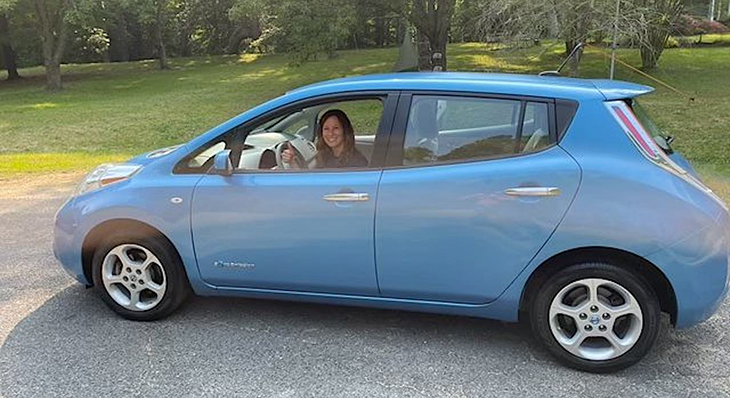
In the critical initial two years of life, the human brain undergoes substantial development, forming an astounding one million neural connections every second.
However, the detrimental impact of air pollution around urban areas has emerged as a significant hindrance to healthy brain development. Recognizing this issue, Kat Harrison committed herself to advocating for a solution.
As of 2014, nearly half of the American population resided in areas that failed to meet federal air quality standards. Since 1958, scientific studies have identified automobile exhaust as the primary contributor to urban air pollution.
Furthermore, transportation emissions constitute the largest share of greenhouse gas emissions in the United States, contributing to climate change.
The solution to this problem lies within cities themselves, where electric engines have the potential to eliminate tailpipe emissions entirely.
In an interview with Good News Network, Kate Harrison said, “I suffered from childhood asthma growing up in New Haven, Connecticut where almost 15% of kids have asthma—almost double the national average.”
“The need for cities to reduce pollution is a moral imperative with clearly defined consequences for their most vulnerable residents,” she says. “Especially in many minority communities which are jammed up against highways and major traffic corridors.”
Kate Harrison co-founded MoveEV, a company focused on facilitating the transition to electric vehicles (EVs). The organization assists businesses and individuals in converting their fleet and personally-owned gas vehicles to electric power, providing reimbursements for home charging.
According to the American Lung Association, if all new cars, pickup trucks, and SUVs sold in the next decade were zero-emission, the United Sates could experience p to 89,300 fewer premature deaths, two million fewer asthma attacks, 10 million fewer lost workdays, and save $978 billion in public health benefits by 2050.
Norway serves as a real-world example of successful EV adoption and its positive impact on air pollution reduction. Approximately 80% of new cars sold in Norway are fully electric, with an additional 10% being plug-in hybrids. The country’s electricity grid is predominantly green, consisting of 91.8% hydropower and 6.4% wind, leading to a 75% reduction in dangerous particle emissions from 2000 to 2020.
“EVs are an incredible technology that can move the needle on climate pollution, help families—and cities—save money, and improve our health.”
California’s ambitious EV adoption goals have yielded tangible results, as evidence, as evidenced by a study from 2013-2019. A 3.2% drop in the rate of emergency room visits due to asthma was associated with a 20-unit increase in electric vehicles per 1,000 people in a given zip code.
Kat Harrison advocates for cities to lead by example, urging them to replace gasoline-powered fleet vehicles with EVs. Notably, Amazon has over 100,000 electric delivery vans on the road, and New York City operates more than 4,000 government-owned EVs, including an electrified garbage truck fleet. The federal Clean School Bus Program allocates over $5 billion to help cities prioritize electric vehicles near schools.

Harrison also encourages individual transitions to EVs, sharing insights on a blog on the MoveEV website, such as her experience buying a 2012 Nissan Leaf, emphasizing that it’s “an insanely affordable electric vehicle.”
To facilitate electric car usage, cities like Los Angeles provide over 1,100 public charging stations, free parking, and charging at selected locations. Residents installing home chargers may also benefit from rebates.
In certain cities, such as San Francisco, EV drivers receive reduced bridge tolls, further incentivizing the shift towards electric transportation.
Harrison said, “Every parent deserves the assurance that their child’s environment isn’t silently eroding their potential. Data from places like Norway and California present not just a vision but a tangible reality of what is achievable.”
“It’s no longer a question of whether cities can afford to embrace electric vehicles but whether they can afford not to. With advances in EV technology, cities and counties have no excuse not to meet the imperative of embracing EV adoption,” she adds.
And through MoveEV, they’ll definitely be able to achieve it.
What are your thoughts? Please comment below and share this news!
True Activist / Report a typo


